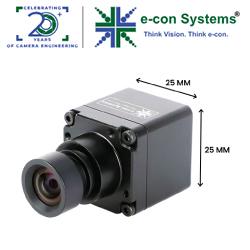When Trust in Robotics Comes Down to the Internet Connection
.jpg)
This decade is shaping to be an important one for industrial robotics. While the integration of robots into everyday life has often been idealized in a distinctly far-away future, we are now witnessing a convergence of high expectations with real-world experiences. Robotics technology is demonstrating its capability to support a range of public-facing and behind-the-scenes services, and importantly, it is doing so with increasing frequency.
We’ve reached a point where once intractable challenges in the industrial space are being increasingly solved with robotics. Consider these three examples where industrial robotics is playing an increased role in our lives.
In just a few short years, robotaxis have transitioned from being a novelty to being accepted as a safe mode of travel. They have become a common way to travel in San Francisco and Phoenix, to the point where the exact number of robotaxis operating on city streets is unknown. Considering the technical challenge of designing and operating a fleet of robotaxis, there’s perhaps no better indication that the most difficult parts of this challenge have been resolved than by the shift in customer conversation about the taxis: nowadays, the lack of a human driver is less of a concern than the cleanliness of the ride.
Robots are also highly integrated into grocery and eCommerce operations. Across Amazon’s entire operations, for example, there were 750,000 industrial robots in use at last count, up from 200,000 in 2020. Again, this growth rate demonstrates the shortened time-to-acceptance for industrial robotics technology. We’ve now moved beyond questions of whether the technology is capable, to how quickly a robotic-assisted order can arrive at the buyer’s place of residence (which, incidentally, is now inviting the use of other forms of robotics such as drone delivery to quicken the pace even further).
Meanwhile, in hospitals, complex surgical tasks have been robot-assisted for years. This is now evolving to telesurgery, which combines robotics with communications systems to perform surgery from remote locations. Pre-clinical trials have shown it is possible to perform procedures with surgeons sitting thousands of miles from the operating theater. This could be the next use of industrial robotics to go mainstream and become an accepted part of life.
The all-important connectivity
It’s clear that industrial robotics technology has reached a point where it’s capable of solving a wide variety of use cases, and of meeting business and consumer expectations. But the surgical example in particular makes an important point: these advances are not driven by robotics alone.
Communications networks have a crucial role to play in ensuring that robots - whether vehicles, drones, humanoids or arms - can do a task consistently, reliably and to a high enough quality standard that these robots are accepted.
In a high-stakes world augmented or run by robotics, low-latency and ultra-reliable connectivity can be the difference between success and failure.
A sudden drop in connectivity could mean the robot is going to stop halfway through its task. Not all impacts are going to be equal - the flow-on impact of a loss of connectivity will be lower for a drone delivery than for surgery - but the point is that ongoing acceptance of and social license to operate robots is contingent on consistent, reliable performance - and a certain type of communications network, the Industrial Internet of Things or IoT network - is the significant underlying driver and enabler of this.
An important ‘North Star’ characteristic for these networks is that they are lossless - that all critical data is transmitted to and from the industrial robot, so that it can function optimally all of the time, without failure.
Reliable hardware - routers, switches, fiber optic cabling, cellular base stations and wireless access
points - is part of that. The other part is service assurance. Data traffic today is largely transmitted over the Internet, which itself comprises a complex mix of connectivity services that are either owned by the robotics user such as the robotaxi company or hospital, or by another telecommunications provider.
What’s important is having the capability to seamlessly bring all those components and connections together, and to make that communication lossless from one end of the communication to the other. That is, every part working seamlessly and in synchronization to enable the robot to perform its intended tasks effectively. The integrity of the network connected to the robot has to be maintained, guaranteed and assured at all times.
Today’s use of robotics technology already demonstrates its applicability and potential. The question now is what can robotics achieve next? Key to unlocking more use cases - both for consumers and businesses - will be trust in performance and trust in connectivity. Trust that the robotics task at hand can be completed well and without disruption. To that end, Industrial IoT networks and network assurance services play an integral part. The future is here and so is the technology to make it a reality.
Featured Product

